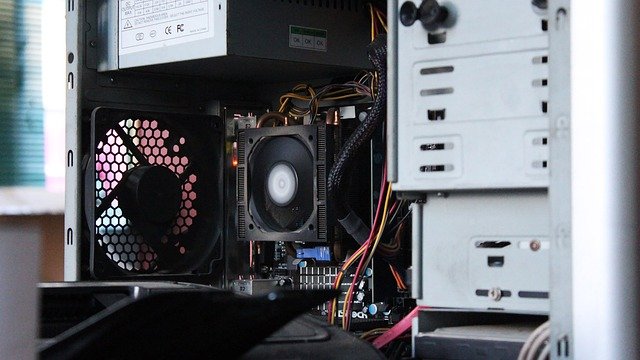Interpreting Certification Labels and What They Mean for Refurbished Parts
Certification labels on refurbished parts signal what testing and standards those components have met, but the meaning varies by program and provider. For buyers of refurbished hardware and devices, understanding certification helps evaluate performance, compatibility, warranty coverage, and likely lifespan. This primer explains common certification claims, how they relate to repairs, maintenance, resale value, sustainability, and price expectations.

Certification labels can simplify evaluation of refurbished hardware, but they are not always interchangeable. Different providers use diverse processes and terminology when certifying devices or components. A label may indicate functional testing, visual inspection, replacement of key components, or a full factory refurbishment. Knowing what a given label actually required — and whether independent testing or OEM standards were applied — helps you assess likely performance, compatibility with other components, security status, and expected lifespan.
What does certification indicate for refurbished hardware?
Certification typically documents that a device or component passed specific inspections and tests. Some programs focus on functional testing only, while others include replacement of worn components, firmware updates, or cosmetic refurbishment. For example, an SSD certified by a provider may have undergone health and performance testing plus a secure wipe, whereas a certified battery might be replaced entirely. When evaluating certification claims, look for details on the test scope, who performed it (OEM, third party, or seller), and any associated documentation or testing reports.
How does certification affect performance and benchmarking?
A certified refurbished part should meet baseline performance expectations, but measured outcomes depend on the type of testing performed. Benchmarking can reveal whether a certified CPU, SSD, or GPU performs within typical ranges for its model and age. Certification that includes stress testing and firmware updates reduces the risk of degraded performance; however, certification does not guarantee parity with new components. Independent benchmarking reviews and testing reports are useful for confirming claims related to performance and to spot units with diminished throughput or thermal behavior.
What certification means for compatibility and components?
Compatibility is often overlooked when buying refurbished parts. A certification label rarely guarantees universal compatibility across all systems. It may indicate that the component functioned in a specific configuration during testing, but variations in firmware, connectors, and board revisions can affect real-world fit. Check component-level details (part numbers, revision codes) and whether the certifier tested the part in the same class of devices you plan to use. For complex upgrades, prefer providers that publish compatibility matrices or offer local services that can validate fitment.
How warranties, repairs, and maintenance relate to certification?
Warranty terms are a key differentiator between certification programs. Some certified refurbished parts come with short limited warranties from resellers; others include manufacturer-backed coverage. Certification that includes replacement parts and documented repairs often carries a longer warranty or return window. For ongoing maintenance and repairs, selecting certified components from providers with local services or accessible repair networks will simplify future support. Always read the warranty scope: it should explain what repairs are covered, expected turnaround, and whether warranty applies to subsequent upgrades or third-party repairs.
What sustainability and resale implications do certifications have?
Certification programs can support sustainability by extending device lifespans and improving resale prospects. A well-documented certification increases buyer confidence at resale, potentially improving resale price and reducing electronic waste. Conversely, vague certification claims can depress resale value if buyers doubt testing rigor. Certifications that include component replacement or secure data-wiping also bolster security and compliance for resale. When assessing sustainability, prefer providers that detail reuse practices, recycling options for non-repairable components, and lifecycle testing outcomes.
Pricing and provider comparison
Below are representative provider/products and estimated price ranges for commonly purchased refurbished parts and devices. These are typical benchmarks and should be verified at the time of purchase.
| Product/Service | Provider | Cost Estimation |
|---|---|---|
| Refurbished MacBook (certified refurbished) | Apple Certified Refurbished | $499 - $1,199 |
| Refurbished business laptop (Latitude/OptiPlex) | Dell Outlet | $149 - $699 |
| Refurbished SSD (consumer grade) | Amazon Renewed | $30 - $120 |
| Refurbished GPU or desktop components | Newegg Refurbished / Best Buy Certified | $150 - $600 |
Prices, rates, or cost estimates mentioned in this article are based on the latest available information but may change over time. Independent research is advised before making financial decisions.
How to evaluate testing, security, and reviews
Look for transparency about testing methods and security practices. Good certification programs publish what tests were run (functional checks, burn-in, firmware updates, secure erasure), who conducted them, and whether components were replaced. Independent reviews and user testing reports provide practical insight into long-term reliability and real-world security issues. Pay attention to reviews that include benchmarking and teardown testing, since they often reveal whether certification corresponded to actual component replacement or merely a functional check.
What to expect for lifespan, upgrades, and repairs
A certified refurbished component may offer substantial remaining lifespan, especially if key wear-prone parts were replaced. Certification that documents part replacement (batteries, storage, fans) is a positive sign for longevity. For upgrades, confirm compatibility and whether the certifier supports firmware updates or provides installation guidance. When repairs are needed, a clear warranty and accessible repair/return process from the certifier or local services will reduce downtime and cost.
Conclusion Certification labels are useful shorthand but require context. Evaluating claims, understanding the scope of testing, checking warranty coverage, and consulting benchmarked reviews will give a clearer picture of performance, compatibility, and likely lifespan. Pair certification details with transparent pricing and provider policies to make informed purchases of refurbished parts and devices.





